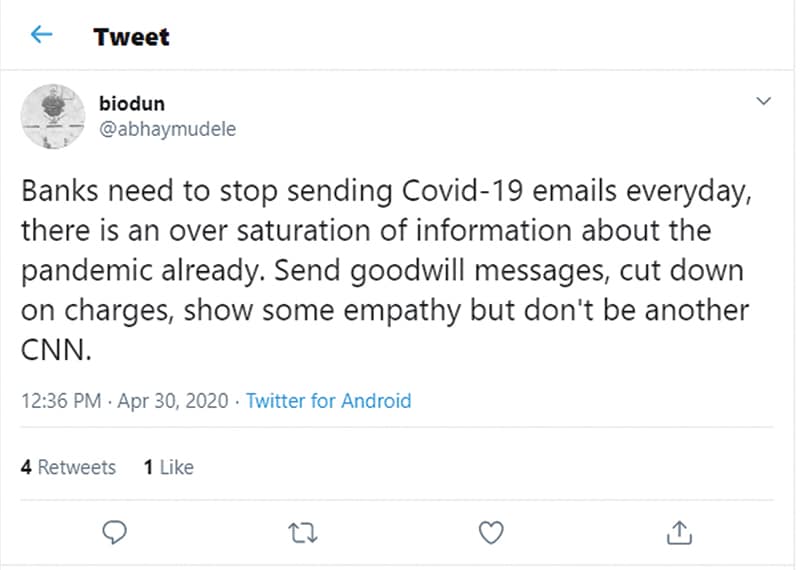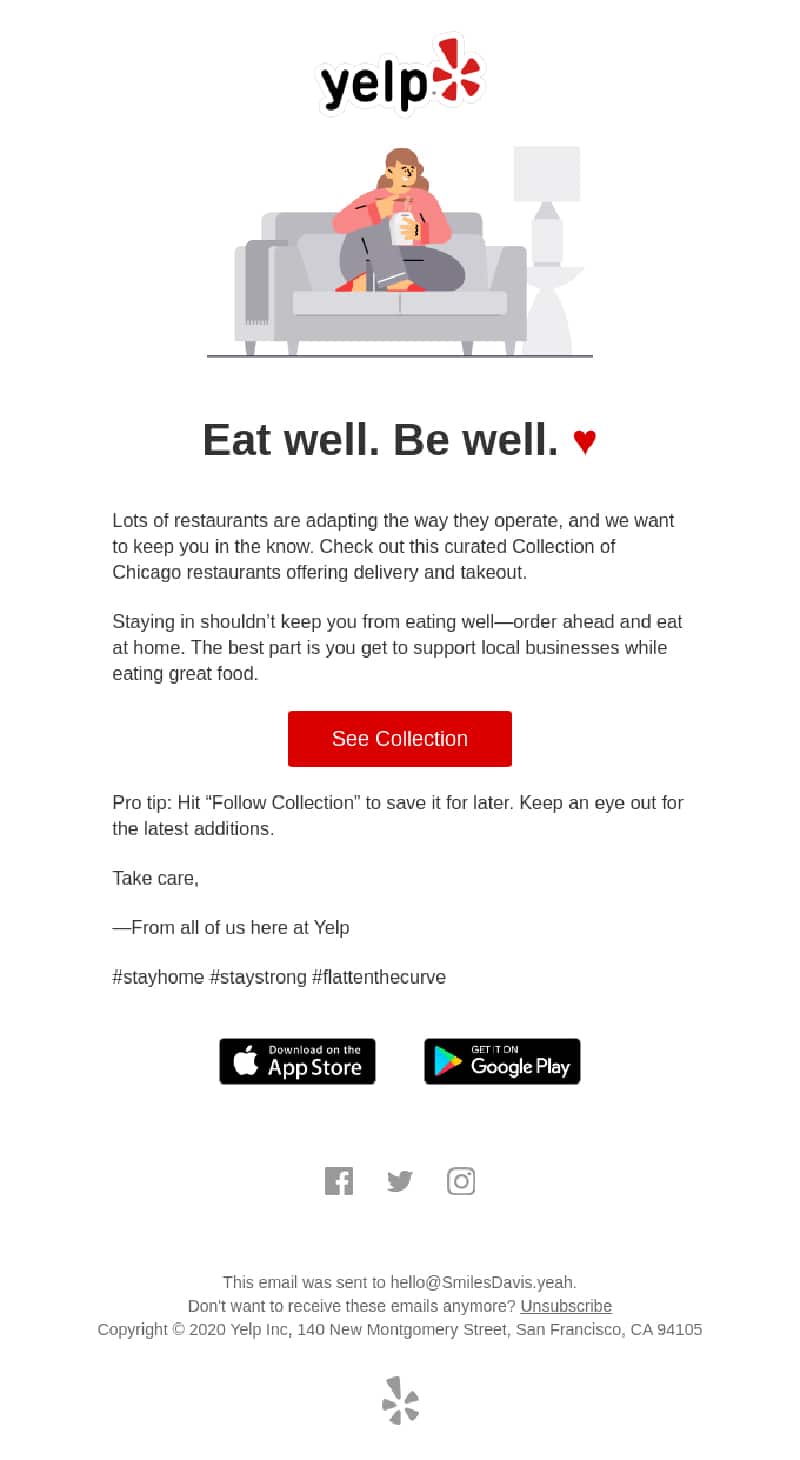The COVID-19 pandemic has quickly become one of the most broadcasted events in recent history. Since early January, there have been more than 1.5 million articles published about the global health crisis and its far-reaching impact.
Ironically, this news event has put the publishing industry in jeopardy. Print publications are now facing the issue of companies downsizing their advertising spend as a result of the economic impact of COVID-19.
Publishing companies will need to be prepared to connect with their target audience once businesses reopen. Email is the preferred means of communication, but how will they stand out amid inbox saturation and have their message heard? Campaign Monitor can help.
COVID-19’s impact on the publishing industry
While the impact of COVID-19 is far-reaching, its effect on publishing companies has been especially impactful. To help mitigate the health crisis, companies responded with business closures and staff reductions. Money allocated to advertising budgets had to be used elsewhere to help keep businesses afloat. Suddenly, publications lost their revenue, and now many are facing a serious economic downfall.
Stay-at-home orders and social distancing are keeping people from walking past newsstands to purchase their publications. There’s a new fear around in-person contact and the spread of germs. Subscribers don’t want to pick up a physical copy of a print publication in these uncertain times.
Publications worldwide are feeling the impact of COVID-19. It’s the reason Playboy Enterprises decided to pull the plug on its Playboy magazine after 66 years in publication. Another publication that announced its closure was the San Diego Magazine. After 72 years in publication, the enterprise found itself having to lay off nearly its entire staff. Finally, the Time Out Group announced it was temporarily suspending print editions for each of its 40 magazines for the foreseeable future.
As publication companies are suffering, COVID-19 is driving an incredible amount of traffic to online news sources. Reports show that the global pandemic has caused a 60% increase in online news sites’ content views. Articles mentioning the coronavirus now comprise 15% of total daily web traffic. The public is relying on the internet for local news and information, which is causing a spike in digital subscriptions.
However, traffic isn’t very monetizable, and the increase in digital subscriptions doesn’t overcome the steep decline in ad sales.
Planning for the future
The good news is that this global pandemic won’t last forever. COVID-19 cases are decreasing, social restrictions are lifting, and businesses are preparing to reopen. Now is the time for publishers to begin planning for recovery.
In a recent study, 54% of consumers indicated that they use the internet more frequently since the onslaught of COVID-19. Consumers are looking at their email for information. There’s a strong need now for businesses to communicate clear expectations, keep customers informed, and maintain contact with followers via email marketing. The challenge now is that inboxes are flooded with COVID-19 communication.
Source: Twitter
With a well-planned email marketing approach, publishers can stand out after businesses reopen and stay-at-home orders lift.
3 emails publishers can send after businesses reopen
As businesses reopen, companies will be in recovery mode. They’ll send out emails to reconnect with customers and rebuild revenue. Don’t send the same message as everyone else. Consider what you can do differently. Think about your tone, your focus, and ways you might change the narrative. Here are three emails publishers can send to stand out from the crowd after businesses reopen.
1. Check in with your readers.
So many businesses will come out of the gate eager to boost sales. At this time, when everyone is just beginning to find their footing in their new normal, it’s essential to put the focus on your users. Deliver an email that shows you’re compassionate and socially aware. Get a feel for their frame of mind. Find out what their needs are during this time and put them before your own.
Source: Really Good Emails
Be empathetic to their situation. Rather than focusing on how you’re going to do business together, emphasize your desire to rebuild a sense of community. Show you care about your readers, and let them know they can depend on you to continue to provide reliable information. This personal approach will resonate with your readers and set you apart from other messages they’re sure to receive.
2. Find a need and fill it.
Life after COVID-19 is going to look very different for some people, and that could last a while. Set yourself apart from the competition by doing something nobody else in your industry is doing. Offer a relevant, unique solution to new challenges people are facing after COVID-19. Find a need among your readers and fill it. Then send an email that entices them with a feature story about that service.
Source: Really Good Emails
For months, people have coped with isolation and layoffs. They’ve been inundated with fearful information and alarming statistics about the human and economic effects of a global pandemic. Maybe for a limited time, you offer an alternative weekly publication that features only good news. Or perhaps the need is simply resources, for which you can offer your network of contacts. Find ways to be useful to your subscribers beyond your usual products/services and send an email that tells that story.
3. Maintain positive momentum.
Even the best-laid plans can be derailed amid an unexpected global health crisis. After COVID-19, your publication will need to create a new strategy as you plan for the future. Send a message to your audience that acknowledges today’s uncertain climate, but assures them there’s nothing to worry about when it comes to your publication.
Source: Really Good Emails
Let followers know that, although original business plans have been detoured, you have a Plan B. Adaptability is going to be key in the success of businesses after COVID-19. Share your new strategy. Alert subscribers about exciting plans you have for the future. Convey your new goals and outline the role your readers can play in the success of your plans. Assure subscribers that you’re looking forward to what lies ahead, and the future looks bright.
Email best practices for publishers after COVID-19
While email content can set your publication apart from the competition, it’s useless if the email is never opened. A staggering 105 billion emails are sent every day, many of which are never read. Follow these email best practices to help your message stand out from the crowd and increase email open rates.
Effective subject lines
Grab your readers’ attention from the beginning with a catchy subject line that entices people to open your email. A typical inbox will show about 60 characters of a subject line. You’ll want to get straight to the point in about seven words. Those words should clearly communicate what the email is about. This way, readers can prioritize their urgency at a glance.
Use a subject line to convey value to your readers. Let them know that they have something to gain by reading your message. Include numbers to pique interest and set subject lines apart from a sea of text. Pose a question. Get people thinking and considering their position and whether they’ll take further action. Add a personal touch to your message by tailoring the subject line with a reader’s first name.
Examples of effective subject lines include:
- 5 ways we’re moving forward in 2020
- We’re rolling out a limited-time offer
- Are you prepared for business after COVID-19?
- Here’s a special offer for you, {first name}
Enticing preheader text
A preheader is the summary text following a subject line in an inbox. It gives viewers a sneak peek at the email’s contents without having to open the message. Recipients use this as a way to screen emails, while senders use it as a way to make an impression. A strong preheader is 85 to 100 characters long. Give it a different color or font style to help it stand out from other text.
The wording is typically pulled from the first line of text in the body of your email. This line can be the difference between someone opening your email or bypassing it, so you’ll want to make it meaningful. Like subject lines, you can personalize it, pose a question, or add value to your message. All of these techniques lead to a higher email open rate.
Wrap up
The economic impact of COVID-19 has been especially detrimental to the publishing industry. Once the pandemic subsides, email communication with subscribers will be crucial to recovery. Unfortunately, inboxes inundated with COVID-19 messages will make it difficult for a publisher’s message to be heard. To stand out after businesses reopen, publishers should send emails that:
- Put readers’ needs before their own
- Offer unique services that fill a need
- Look ahead to a bright future
Utilize best practices like clever subject lines and enticing preheader text
These messages are sure to resonate with subscribers, build strong personal relationships, and help set you apart from the crowd.
We can help your publication stand out with email marketing after COVID-19. For more information, contact our sales team today.









